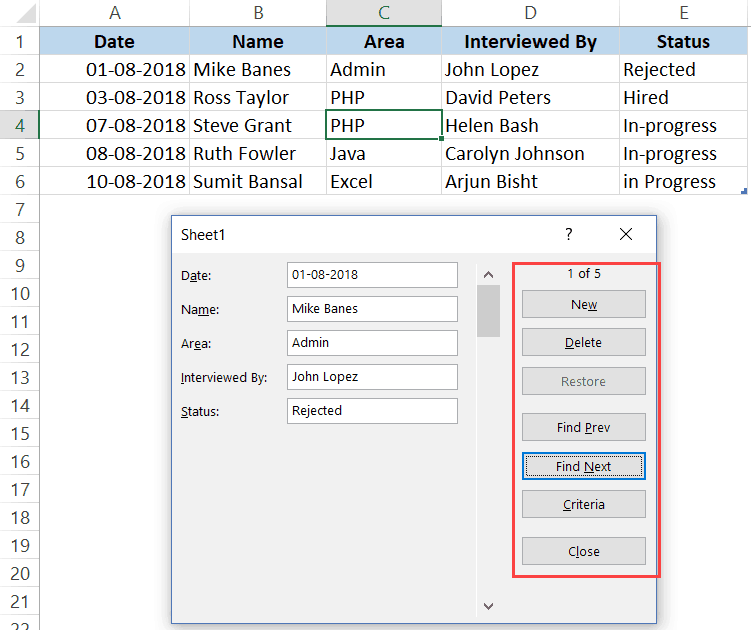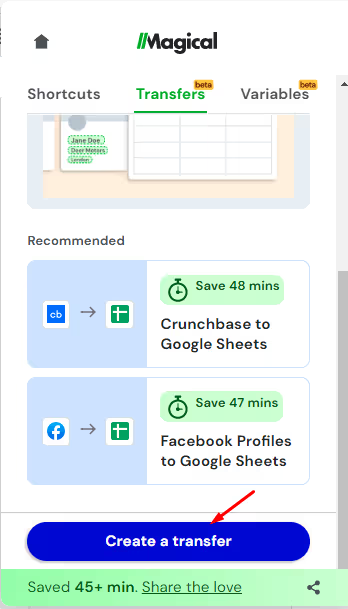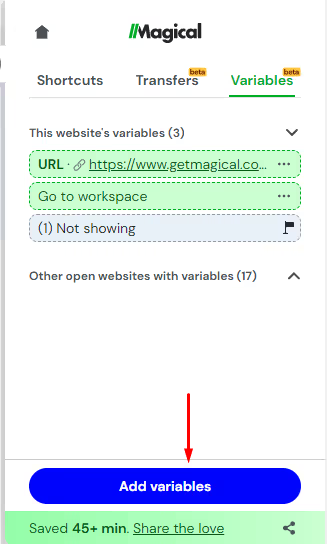This just in: data entry automation is now free and requires zero tech knowledge! (OK, well, close to zero.)
Automation and AI are buzzwords that Big Tech loves to throw around—but they’re not just for the heavyweight megacorps anymore. Today, literally anyone can download a no-code ambient automation app and start saving time.
Can I automate data entry jobs? You bet!
These solutions have also become really accessible—in fact, there are now plenty of free tools available. This means that it’s time to say good riddance to copy-pasting in bulk for good. (That’s our goal, anyway.) Keep reading to find out how you can join us…
What is data entry automation?
Data entry automation involves using software to automate repetitive data entry tasks, freeing up valuable person hours and reducing errors. Data entry automation generally falls into one of two categories:
- Assisted: These software tools help people automate data entry tasks in their day-to-day activities. An autofill tool, like the one that comes with your browser, is a really simple example of this.
- Independent: Some technologies, like robotic process automation (RPA) tools, let you run automations to manage specific tasks and processes. For example, you might have RPA bots allocated to process certain questions or claims. This type of automation helps organizations free employees up entirely from mundane tasks, so that they can take on more specialized roles.
In this article, we’re going to mostly focus on assisted data entry automation, because it’s easy to implement and it’ll help you in your daily tasks.
What technologies are used in data entry automation?
As mentioned above, data entry automation can be as simple as your browser’s autofill feature. But there have been big advancements in automation in recent years, so you can take your pick from more robust tools.
Two popular technologies used for data entry automation are:
- RPA: This software attempts to mimic human interactions, like keystrokes and navigation, to automate repetitive tasks.
- AI: AI has almost become a catch-all term for every shiny new technology trend, but it’s also really helpful for the simple stuff—like automated data entry. AI-powered optical character recognition (OCR) tools, for instance, can read scanned documents and input data automatically.
These two types of technology are so versatile that they’re used in different ways to achieve automation. For example, some Chrome extensions for automating tasks (like Magical) are built on RPA technology.
How to automate data entry: 2 real-world scenarios
Ready to banish boring data entry from your life? Here are two examples that show you how it can be done so much faster.
1. How to automate data entry in Excel
So, how do you automate data entry in Excel?
If you work with Microsoft Excel a lot, you probably end up manually entering data more often than you’d like. Fortunately, you can create fillable forms in Excel to automate data entry.
- Start with some of your data. For example, a list of a few leads, including their contact details and job titles.
- Now, use your mouse to select the entire tab, and press “Ctrl+T”. If your table already has headers, select the “My Table Has Headers” option and press “OK.”
- Right click the ribbon at the top of your Excel window and three options will appear. Choose “Customize Quick Access Toolbar.” Multiple drop-down menus should appear.
- Select the “Choose Commands From” option and press “Commands Not in the Ribbon.”
- Scroll down till you find the “Form” button, and select it. Then press “Add >>.”
- The “Form” option should now appear in the top right corner of your Excel window. Select it!
- Ta-da! You’ve now got yourself an automated data entry form right in Excel.

You’ll still need to input data into the form, but you can automate that part, too. For example, open your Excel sheet in the cloud version of Excel—so that it’s on your browser—and you can use Magical to teleport the data from your open tabs to Excel.
Another way to automate data entry in Excel is to use Microsoft VBA to create a Windows-native form, sending the data to Excel without needing to input anything. This process does require a fair bit of tech knowledge, however. Here’s Microsoft VBA’s documentation if you’re interested in finding out more.
2. How to automate data entry into websites
If you work mostly in the cloud, a lot of your workflow lives on your browser. Checking your CRM, updating your ATS, working on Google Sheets or Docs, and responding to emails are all part of your day-to-day. (Slack’s web app comes in pretty handy, too.)
With all of this at your fingertips, you might find yourself copy-pasting between tabs a lot. If you’re updating your database of potential leads, for example, bouncing between your spreadsheets and LinkedIn might be a constant task. Does this type of manual data entry sound familiar? Then Magical might be just what you need. It automates data entry across websites (and doubles as a very customizable text expander).
Magical helps you automatically transfer data right from your browser, without any need for integrations. Here’s how it looks in action:

Now, let’s go through the steps to set up Transfers. First, open the tabs where you want to transfer information from, and one tab for where you want to transfer the information to. For example, you might want to transfer information from LinkedIn to your CRM or Google Sheets. So make sure both these tabs are open.
Next, open up the Magical Chrome extension, and select the Transfers tab. Then, click the “Create a transfer” button:

Now, a pop-up should appear, prompting you to choose the source to transfer data from, and the destination. Select both from the drop-down:

You can go ahead and press the “Go to destination” button, and it’ll take you to the destination tab (in this case, Google Sheets). The app will proceed to ask you to type “//” and choose the variables you want to transfer:

P.S. If you need to transfer variables that Magical doesn’t automatically pick up on? Just open the Variables tab and select the “Add variables” button:

You’ll be prompted to click on the web page to select the new variable, and asked to name it. When you’re done adding variables, press “Done” to save them.
Congrats. Your days of copy-pasting mountains of data are gone. 😎
Ready to automate?
Data entry automation saves people loads of time every day, but getting started isn’t always easy. If you’re using software like Microsoft VBA or an RPA tool like UIPath, setting up data entry automation takes a fair bit of effort—and possibly some programming knowledge.
This is where Magical comes in handy. The app’s data entry automation features save sales pros, recruiters, and customer support teams literal years of time. Magical Transfers level the playing field: with them, anyone can start automating data entry in seconds.







